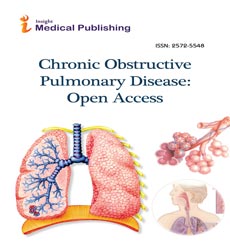Does green space matter? Exploring relationships between green space type, physical activity, quality of life and cardiovascular disease prevalence
CO-ORGANIZED EVENT:International Conference on Chronic Diseases & 6th International Conference on Microbial Physiology and Genomics
August 31-September 01, 2017 Brussels, Belgium
Abdullah Akpinar
Adnan Menderes University, Turkey
Posters & Accepted Abstracts: Chron Obstruct Pulmon Dis
DOI: 10.21767/2572-5548-C1-003
Abstract
This study explores whether specific types of green spaces (i.e., urban green spaces, forests, agricultural lands, rangelands, and wetlands) are associated with physical activity, quality of life, and cardiovascular disease prevalence. A sample of 8,976 respondents from the Behavioral Risk Factor Surveillance System, conducted in 2006 in Washington State across 291 zip-codes, was analyzed. Measures included physical activity status, quality of life, and cardiovascular disease prevalence (i.e. heart attack, angina, and stroke). Percentage of green spaces was derived from the National Land Cover Dataset. Multi-level regression analyses were conducted to analyze the data while controlling for age, sex, race, weight, marital status, occupation, income, education level, and zip-code population and socio-economic situation. Regression results revealed that no green space types were associated with physical activity, quality of life, and cardiovascular disease prevalence. On the other hand, the analysis showed that physical activity was associated with quality of life, and cardiovascular disease prevalence. The findings suggest that other factors such as naturalness, structure and distribution (sprawled or concentrated, large or small), quality, and characteristics of green space might be important in quality of life and cardiovascular disease prevalence rather than green space types. Therefore, further investigations are needed.
Google Scholar citation report
Citations : 130
Abstracted/Indexed in
- Google Scholar
- China National Knowledge Infrastructure (CNKI)
- Publons
- Geneva Foundation for Medical Education and Research
- Secret Search Engine Labs
Open Access Journals
- Aquaculture & Veterinary Science
- Chemistry & Chemical Sciences
- Clinical Sciences
- Engineering
- General Science
- Genetics & Molecular Biology
- Health Care & Nursing
- Immunology & Microbiology
- Materials Science
- Mathematics & Physics
- Medical Sciences
- Neurology & Psychiatry
- Oncology & Cancer Science
- Pharmaceutical Sciences

